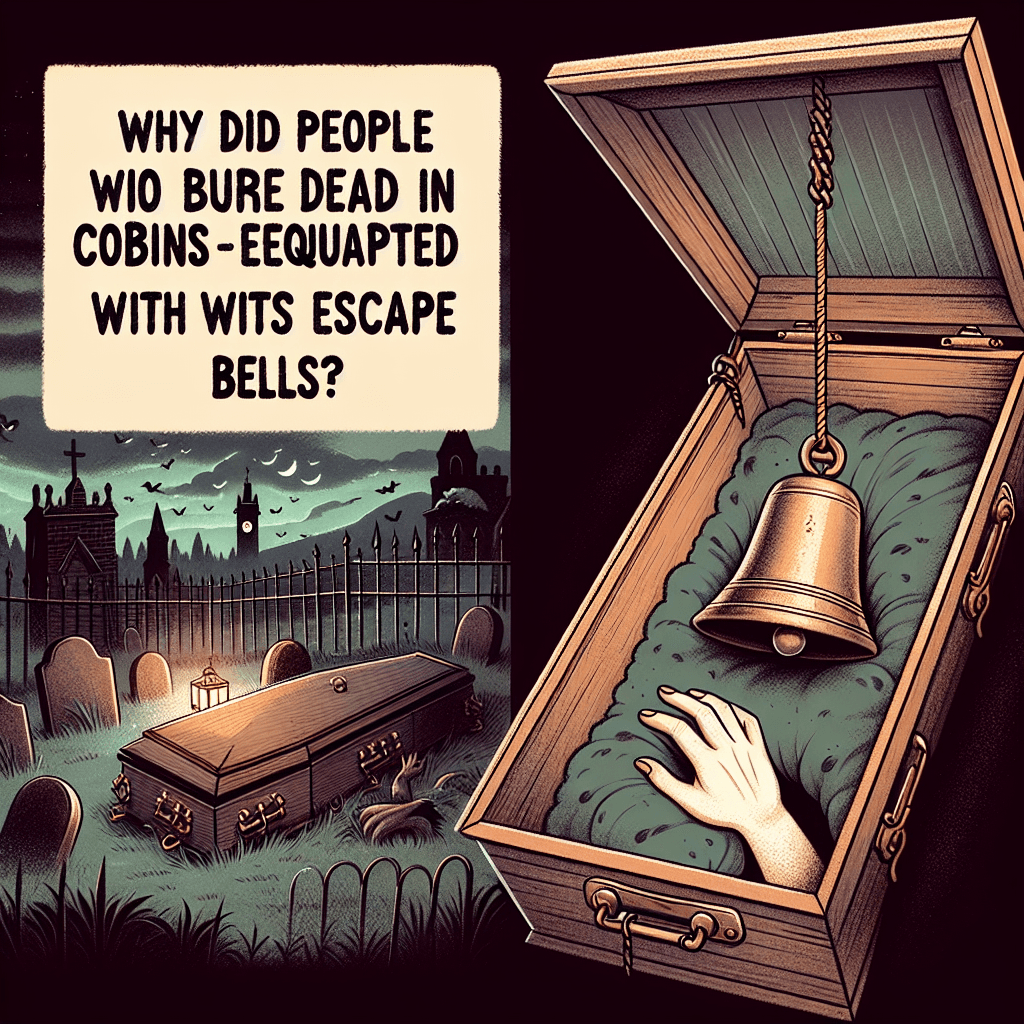Why did people once bury their dead in coffins equipped with escape bells
In the 19th century, the most terrifying nightmare wasn't dying—it was waking up at your own funeral. This widespread fear led to a morbidly ingenious invention offering one last, desperate lifeline from beyond the grave.


Too Long; Didn't Read
TLDR: In the 18th and 19th centuries, a widespread fear of being buried alive, fueled by the era's limited medical ability to confirm death, led to the invention of safety coffins. These were equipped with bells, flags, or air tubes to allow a prematurely buried person to signal for help.
Saved by the Bell: Why Did People Once Bury Their Dead in Coffins Equipped with Escape Bells?
Imagine the scene: a quiet, somber graveyard in the 19th century. Suddenly, a faint ringing breaks the silence, emanating from beneath the soil. This isn't the opening of a ghost story, but the very scenario that a peculiar invention was designed to create. The fear of being buried alive, known as taphophobia, was so pervasive in the 18th and 19th centuries that it sparked a wave of innovation in the world of mortuary science. These "safety coffins" were equipped with everything from bells and flags to air tubes, all designed to give a person a second chance at life. This post will delve into the historical panic behind premature burial and explore the ingenious, if rarely used, devices created to prevent it.
A Fear Rooted in Reality: The Age of Taphophobia
Before the advent of modern medicine, determining the exact moment of death was more of an art than a science. Doctors lacked the tools we take for granted today, like stethoscopes for listening to a heartbeat or an EKG for monitoring brain activity. Instead, they relied on crude signs: a lack of breathing, no detectable pulse, and body temperature. This created a terrifying margin of error.
Several factors fueled this widespread fear:
- Medical Conditions: Certain medical states, such as comas, catalepsy, or fainting spells, could mimic the appearance of death. Victims would exhibit shallow breathing and a faint pulse, easily missed by the medical practitioners of the day.
- Disease Epidemics: During devastating cholera and plague epidemics, victims could fall into a death-like state very quickly. The rush to bury the dead to prevent the spread of disease increased the chances of a tragic mistake.
- Sensationalized Stories: Newspapers and literature, including the chilling works of Edgar Allan Poe like "The Premature Burial," often published dramatic, though not always verified, accounts of people waking up in their own coffins. These stories captured the public imagination and amplified the collective anxiety.
This palpable fear led people to go to great lengths to ensure they were truly deceased before being interred, from requesting that an artery be severed to insisting on being buried with valuables in the hope that grave robbers would inadvertently rescue them.
The Ingenious and Morbid World of Safety Coffins
For those with enough wealth and worry, the "safety coffin" offered a more direct solution. Between the late 1700s and the early 1900s, dozens of patents were filed for devices intended to alert the living if someone had been buried alive. While designs varied, most shared a few common principles.
Key Features of Safety Coffins
- Alert Systems: The most famous feature was a bell. A cord would be run from a bell on the surface down into the coffin, often tied to the deceased's hand or wrist. Any movement would ring the bell, summoning help. This is believed to be the origin of the popular phrase "saved by the bell."
- Visual Signals: Some designs incorporated a flag or a tube that would be pushed up through the soil by a spring mechanism if the person inside moved. Count Michel de Karnice-Karnicki’s 1897 patent included a flag, a bell, and a lamp that would all be activated by chest movement.
- Breathing Apparatus: Recognizing that an alarm was useless without air, many coffins included breathing tubes or air pipes that ran to the surface, providing a temporary supply of oxygen.
- Escape Hatches: More elaborate and expensive models, like the one patented by Christian Eisenbrandt in 1843, featured a system of springs and levers that would allow the occupant to open the coffin lid from the inside.
Myth vs. Reality: Were These Coffins Common?
Despite the numerous patents and the very real public fear, there is no verified historical account of anyone ever actually being saved by a safety coffin. These devices were expensive, complex, and ultimately, a novelty purchased by the wealthy and eccentric. The vast majority of people were buried in simple, standard coffins.
The fear of premature burial began to fade by the early 20th century as medical science advanced. The invention of the stethoscope and the development of modern embalming practices made it virtually impossible to mistake a living person for dead. The safety coffin became a fascinating but obsolete relic of a bygone era.
Conclusion
The story of the safety coffin is more than just a macabre curiosity; it's a powerful reflection of a society grappling with the limitations of its own knowledge. The bells, flags, and breathing tubes were a direct response to a deep-seated and understandable fear of the finality of death and the possibility of a terrible mistake. While no one may have ever been "saved by the bell," these inventions stand as a testament to human ingenuity and the profound anxieties of our ancestors. Today, we can be grateful that advances in medicine have rendered these morbid contraptions unnecessary, turning a historical terror into a fascinating footnote in history.


